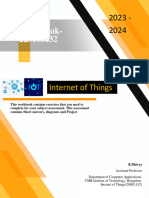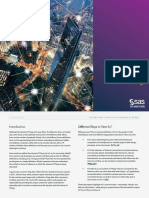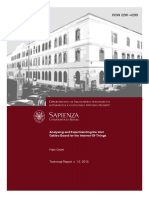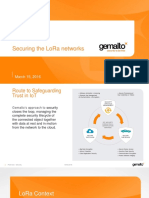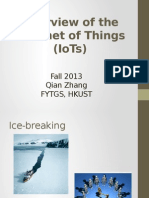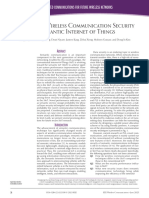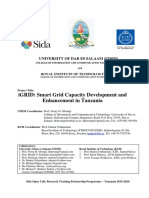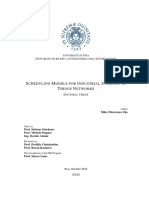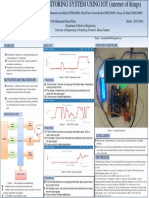0% found this document useful (0 votes)
143 views26 pagesInternet of Things (Iot) : Jaringan Data Dan Protokol - S2 Te PJJ
The document discusses the Internet of Things (IoT), which refers to a wireless network between objects that allows new forms of communication between people and things, and between things themselves. Key characteristics of IoT include artificial intelligence, edge computing, flexibility, connectivity for anything from any time and place. Challenges to implementing IoT include security, bandwidth, power efficiency, and presence detection. Potential applications include environmental monitoring and response planning.
Uploaded by
Afif IlhamsyahCopyright
© © All Rights Reserved
We take content rights seriously. If you suspect this is your content, claim it here.
Available Formats
Download as PDF, TXT or read online on Scribd
0% found this document useful (0 votes)
143 views26 pagesInternet of Things (Iot) : Jaringan Data Dan Protokol - S2 Te PJJ
The document discusses the Internet of Things (IoT), which refers to a wireless network between objects that allows new forms of communication between people and things, and between things themselves. Key characteristics of IoT include artificial intelligence, edge computing, flexibility, connectivity for anything from any time and place. Challenges to implementing IoT include security, bandwidth, power efficiency, and presence detection. Potential applications include environmental monitoring and response planning.
Uploaded by
Afif IlhamsyahCopyright
© © All Rights Reserved
We take content rights seriously. If you suspect this is your content, claim it here.
Available Formats
Download as PDF, TXT or read online on Scribd
/ 26

